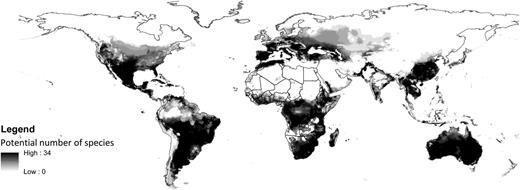Category: Ecosystems
-
How Is Light Pollution At Night Changing Ecosystems?
The research shows that light pollution can impact the natural environment in complex ways that may be hard to predict. Due to the global extent of artificial light at night, there are concerns that these ecological impacts may be widespread.
-
How One Forest Fire Could Forever Change Life In An Entire Region
In the wake of the fire that destroyed more than 34,000 hectares of forests, some of them ancient, in Argentina’s southern Patagonia region, the authorities will have to put out flames that are no less serious: the new socio-environmental catastrophe that will emerge from the ashes.
-
Can Conservation Reinvent Itself To Save Hawaii’s Doomed Lowland Rain Forests ?
Our project is motivated by our past work in lowland Hawaiian rainforests, which are in need of restoration, as they experience low amounts of native species regeneration and exist only in remnant patches filled with highly invasive plant species. It’s a case of ‘dead men standing’: when the existing adults die, this forest will become wholly made up of exotic and invasive species.
-
Save The Ape Or Lose The Forest
Bonobos have a pretty amazing role in the forest. They eat for about 3.5 hours every day and travel a mean of 1.2 kilometers from meal sites before defecating and depositing the seeds that have passed through their systems. And we’re not talking about a small number of seeds: Previous research has estimated that an astonishing 11.6 million seeds travel through an average bonobo’s guts during its lifetime.
-
Everglades Endemic Plants Are Disappearing
I don’t think we should have to lobby to get plants noticed as well as animals, Funding for rare plants is a drop in the bucket compared to funding for python control.
-
People Need Forests. Forests Need Animals.
The livelihoods of as much as a fifth of the world’s population are directly linked to forests, which also provide a home for 300 million people. The presence (or absence) of an animal as significant as elephants can have huge effects on the character of the habitat, as has been demonstrated by comparing two similar forest landscapes in Uganda
-
Best Landscape For Capturing Carbon? Forests? No! Wetlands
One of reasons wetlands perform better compared to forests in capturing carbon is in the way organic matter and sediments are collected underwater, resulting in a slower breakdown that lets swamps act like carbon sinks.
-
Forests Work To Turn Down Atmospheric Thermostat
As temperatures warm, plants release gases that help form clouds and cool the atmosphere, according to new research. The new study identified a negative feedback loop in which higher temperatures lead to an increase in concentrations of natural aerosols that have a cooling effect on the atmosphere
-
How Two Tiny Insects, Attacking Two Different Tree Species, Are Changing Forest Sucession
Because beech and hemlock commonly co-occur in eastern North American forests, invasions by the two pest species are altering the current and future composition of large forest regions through their impacts on these two late-successional species. Such results demonstrate how forest insect invasions can profoundly modify forest dynamic processes, resulting in long-term changes in forest ecosystems
-

The Coming Invasion: Cacti
Hundreds of cactus species have been introduced outside their native ranges; a few of them are among the most damaging invasive plant species in the world.
